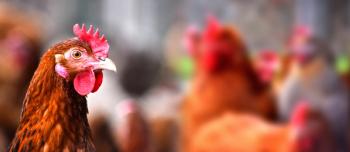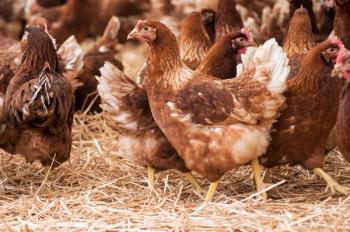
Texas veterinary market worth $1.72 billion, study says
FORT COLLINS, TEXAS — The veterinary medical industry in Texas contributes more than $1.7 billion to the state's economy with services totaling $827 billion annually.
FORT COLLINS, TEXAS — The veterinary medical industry in Texas contributes more than $1.7 billion to the state's economy with services totaling $827 billion annually.
Methodology
That's according to a Texas A&M University study recently released by the institution's veterinary college. "The Economic Impact of Veterinary Medicine on the State of Texas" reveals the state's 4,507 licensed practitioners each returns to the economy an estimated $381,629 in total business sales annually.
"That's a lot of money to put back into the economy," says Dr. E. Dean Gage, executive director of the Center for Executive Leadership in Veterinary Medical Education. "I was very surprised that the impact would be of this magnitude, but when you think about the fact that Texas is the nation's second-most populous state — No. 1 in equine, No. 1 in beef cattle and No. 1 in sheep — it all makes sense."
Historic study
The report, sponsored jointly by the College of Veterinary Medicine and Biomedical Sciences and the Texas Veterinary Medical Association (TVMA), illustrates work largely prepared by three DVM students simultaneously earning business degrees. Consultants and experts in economic impact studies guided researchers Dana Boehm, M. Erin Mitchell and Amber Williams on the project. While the students, among the college's first to earn dual DVM/MBA degrees, could not be reached for comment by presstime, Gage calls the report "professional and legitimate," citing data gathered by determining the number of animals in the state and identifying various components of Texas' livestock and pet-owning populations.
"These students used the same principles and guidelines that any consultant would use when doing an economic study," he says. "They interviewed many corporate owners of practice, nutrition companies and used some consultants."
Nothing to sneeze at
The result: Private veterinary practice makes up the bulk of Texas' veterinary practitioners whose total output effect of dollars spent on veterinary medical services drives $1.3 billion back into the state's economy. In addition, veterinarians employ 12,871 Texans, the study says. That accounts for more than $369 million in revenue generated throughout the state. Private practice adds more than $428 million back to Texas in the form of local resources, such as land, labor, capital and management, the study adds. These same veterinarians also contribute more than $25 million to the state in the form of indirect business taxes.
TVMA Executive Director Elbert Hutchins hopes lawmakers take a look at that. Copies of the study have been forwarded to every legislator in the state.
"Indirectly, this study emphasizes to our elected officials how important veterinary medicine is to the state," he says. "We're hopeful lawmakers will see this kind of economic impact and will look more favorably on funding the college for our economic future."
Small animal draw
Texas' immediate economic future appears to be leaning toward small animal medicine. In addition to economic data, the study provides demographic detail about Texas' veterinary community, and reveals it's largely comprised of companion animal practitioners. To be exact, 58.2 percent of Texas DVMs define themselves as small animal exclusive. Seventy-three percent of the caseload of all Texas veterinarians is related to companion animals, the study shows.
That's not surprising, Gage says. In 2003, Texas residents spent an estimated $2.8 billion on their pets, the study says.
"We have so many cities within the top 15 for population — Austin has more than a million people, the Dallas/Fort Worth metropolitan area and Houston," he says. "When you have that many major metropolitan areas, the demand for small animal medicine is expected. We see the demand for our graduates."
Food animal decline
An almost equal demand for practitioners comes from Texas' food animal sector, but the study reveals veterinarians are not cashing in. The 2002 Census of Agriculture reports Texas led the nation with $10.4 billion in livestock and poultry sales, and in 2003, livestock accounted for 46.3 percent of the state's total agricultural cash receipts.
At the same time, just 3.6 percent of Texas' veterinary community practice large animal medicine, with only 1.4 percent exclusively practicing bovine medicine in a state with 19.8 million head of cattle.
The numbers are alarming, Gage says, but they illustrate how lower starting salaries coupled with longer hours are driving new graduates away from food animal medicine.
"We're definitely following the national trends on this," he says. "We try to address this by taking a larger percentage of students from rural backgrounds, but the employment data indicates that by the time they graduate, a higher percentage goes into small animal medicine. We have a small number of rural and particularly food animal veterinarians taking care of a larger number of herds."
Government roles
That ratio doesn't bode well for food safety as private practitioners are called upon to be first responders at the sign of foreign animal disease outbreaks. The economic impact of a disease, such as foot and mouth disease could easily cost Texas between $6 billion and $50 billion, the study says. Picking up the slack are government veterinarians whose intimate knowledge of zoonotic diseases, epidemiology and population-based medicine often leads them toward careers with the United States Department of Agriculture, Centers for Disease Control and Prevention and Texas Department of State Health Services.
The overall output all of Texas businesses from the governmental veterinary medical sector submits more than $153 million back to the total state resources pool, the study adds.
The economy depends largely on the "flawlessness of this sector," the report says. "Therefore, government veterinarians in public service have an enormous responsibility to the citizens of this nation and the state of Texas to remain vigilant in their surveillance of potentially deadly disease outbreaks that threaten humans and animals alike."
Research ahead
The economy's dependence on veterinary medical profession prompts calls for additional research and further analysis necessary to draw conclusions on issues ranging from biotechnology's effect on industry to evaluating trends concerning the human-animal bond and pet ownership.
"This was a lot of work, but there is still so much that needs to be done," Gage says. "I hope readers of this study take away the huge economic impact veterinary medicine brings and complexity of this profession. It's research that needs to be done in other states."
To read the report in its entirety, visit
Newsletter
From exam room tips to practice management insights, get trusted veterinary news delivered straight to your inbox—subscribe to dvm360.




